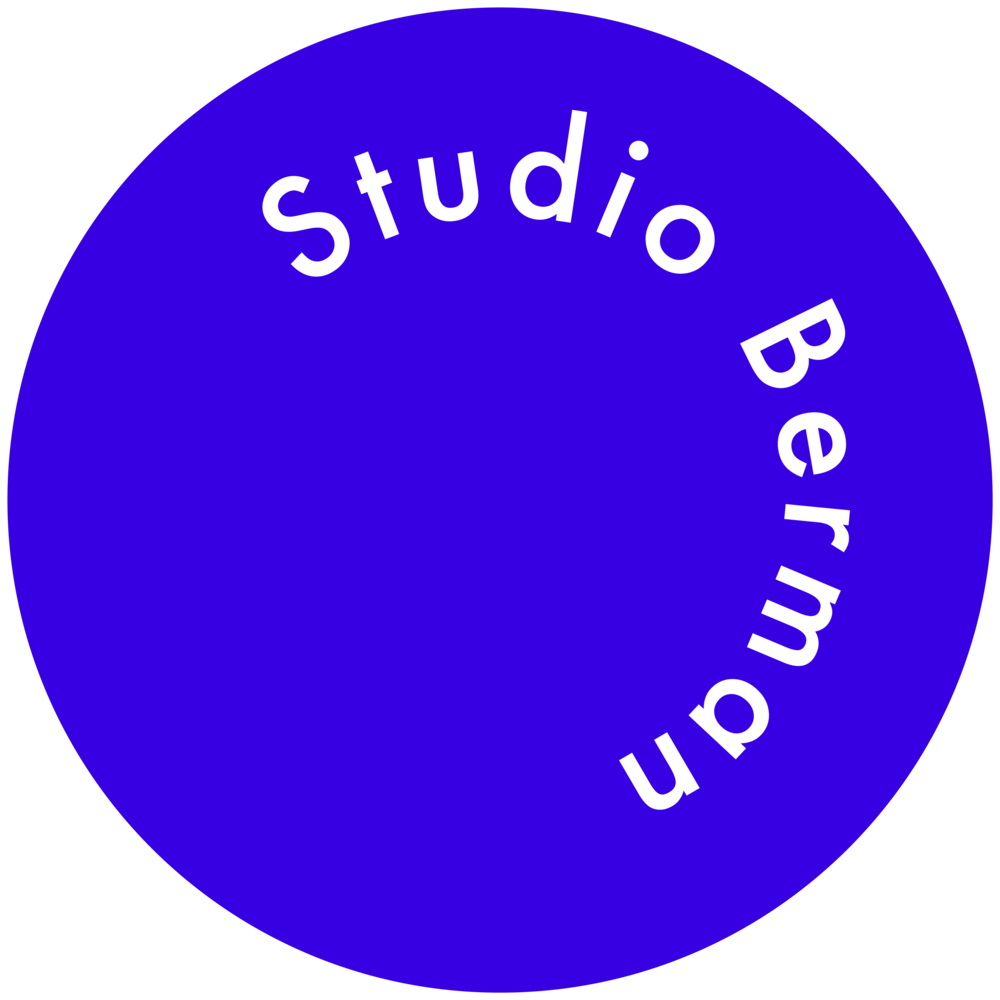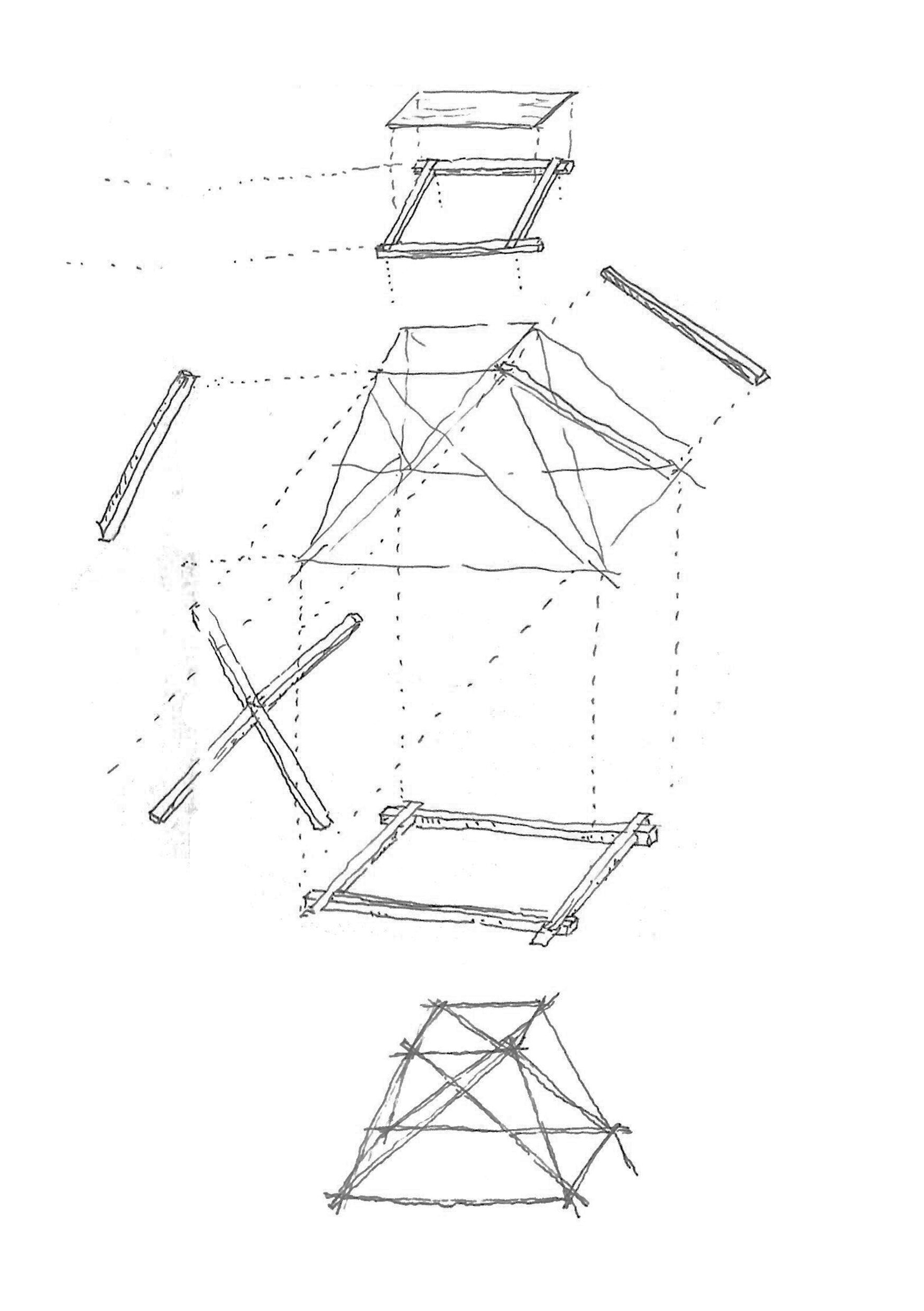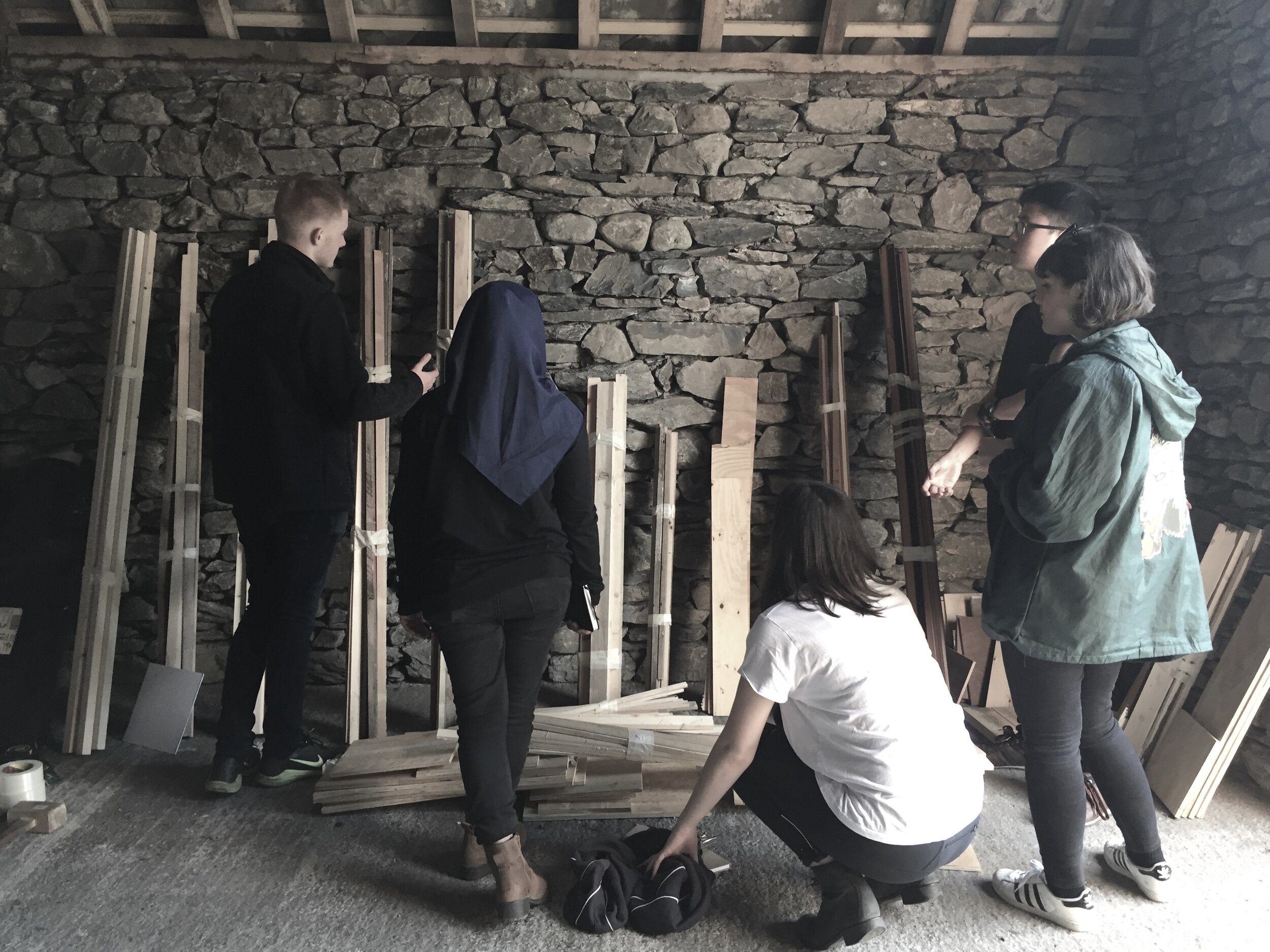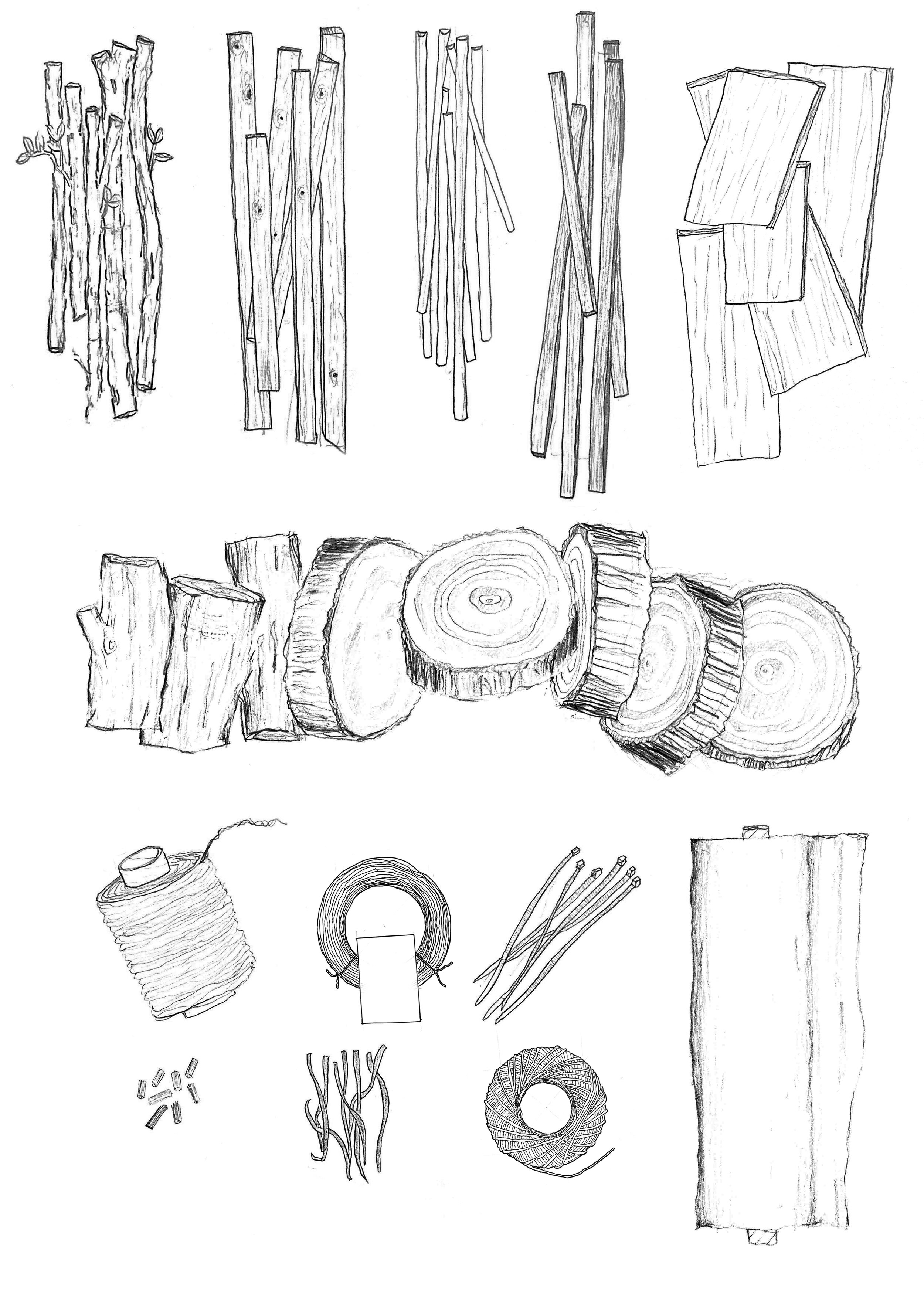Rural Works - Connect
Making woven platforms - moments on a crossing
Pages from a publication - collation of the work from Rural Works, 2017 by Tatiana Light
Central to the concerns of the Rural Works annual workshop is an interest in working hands on. Architecture is about the making of things – responding to need through design, and improving a situation or making a provision through construction. Yet most architecture students have little or no contact with the messy business of making.
The annual Rural Works educational workshop seeks to offer students of architecture a chance to gain experience in directly observing a place, and then building those ideas at life-size scale of 1:1 small-scale installations that respond to the place.
In 2017 we focussed on a specific challenge, turning our attention to a site where a pedestrian bridge has fallen away following severe flooding, leaving two sides of the river separate and disconnected. By engaging with the particularities and real environmental challenges of this place the resulting proposals are specific and locally relevant.
In the first week of the workshop, sketching is used as a form of live research. These sketches have an immediacy to them, and as a method were used to work quickly to capture initial and instinctive responses to the site. These drawings are a form of researching context, as well as a means of communicating ideas. Throughout this on-site week we move back and forth between drawing and making, with design ideas produced for small structures that allow people to better use, access and enjoy the area.
The students spent the second week recording what they built and clarifying their final ideas. These later drawings were produced as a means to review and critically analyse the small structures that were built. This publication forms part of that process of recording, along with a short student made film. This act of recording allows us to share the work with others.








